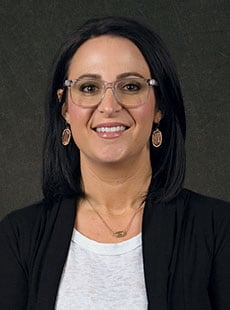 Course Introduction
Course Introduction
Core Standards of the Course
Strand 1
Students will build on basic word processing skills to create and manage documents.
Standard 1
Review basic editing and formatting tools within a document
-
Format and edit text options
- Apply various font styles and font sizes to text within a document
- Apply advanced text options using superscript, subscript, capitalization (lowercase, uppercase, title case)
- Apply and modify styles, insert hyperlinks (to a web page, email, within a document), and clear formatting to text within a document
- Format styles for use in text, tables, and lists (Normal, Heading, Title)
-
Format and edit paragraph options
Standard 2
Identify and navigate through common software application (word processing, spreadsheet, presentation, and database) screen components
-
Locate the various toolbars, menus, and document window
-
Utilize the ruler to edit a document
-
Explain the purpose of the status bar
-
Identify and explore the different options within the navigation pane
-
Apply and edit the different zoom options
-
Utilize the scroll bars to navigate through a document
Standard 3
Customize graphic objects within a document
-
Identify the purpose for different graphic objects (WordArt, image/picture, shapes, and text boxes)
-
Apply and edit different graphic object formats (size and position, text wrapping, borders and shading, shape fill/outline, rotate/flip)
Standard 4
Review, navigate and edit a document
-
Navigate through a document using Find and Replace
-
Edit a document using spell check
-
Use the thesaurus to explore alternative words
-
Apply current formatting throughout a document using the format painter
-
Explore and utilize different design themes within a document
-
Create bookmarks to help navigate through a document
Standard 5
Create and modify a table within a document
-
Insert a table and modify rows/columns (add, delete, select entire table)
-
Format cells within a table (add, delete, size, merge, split)
-
Enhance the appearance of a table using borders, shading/color, and styles
-
Align text within a table and a cell (top, bottom, right, left, center)
-
Sort data within a table alphabetically, chronologically, and numerically
Standard 6
Create and manage simple references within a document
-
Apply simple references appropriately to a document (cover page, table of contents, citations, footnote/endnote, bibliography)
-
Apply and modify caption properties to an image, textbox and figure
-
Review and insert comments throughout a document
Standard 7
Format and customize page layout options within a document
-
Understand the purpose of templates to enhance productivity
-
Create, modify and apply custom margins within a document
-
Identify and insert various section and page breaks within a document
-
Edit page orientation
-
Insert and customize headers and footers and page numbers within a document
-
Apply and customize columns within a document (multiple columns, spacing between columns, lines between columns)
-
Customize and set tabs within a document
-
Customize background color/page color
Standard 8
Code macros within a document
Standard 9
(Optional for Industry Certification) Apply advanced document setting, properties, formatting, and options
-
Edit document properties (title, keywords/tags, subject)
-
Edit display options (enable/disable print background color, always show paragraph marks)
-
Edit save option (auto recovery options, embed fonts)
-
Edit advanced options (print pages in reverse order)
-
Inspect the document for hidden properties and personal information
-
Apply a theme (color, font style, effects)
-
Insert and customize a page border
Performance Skills
Use word processing software to create:
-
Reports that include: Title/cover page, headings, table of contents, page numbers, header or footer, section / page break(s), in-text citations, and footnotes / endnotes
-
Table with merged / split cells, borders and shading, and sorted data (this table may be included in reports, letters, etc.)
-
Code and record a macro and assign it to a keyboard shortcut
Strand 2
Students will build on spreadsheet skills to create and manage worksheets.
Standard 1
Create and edit worksheets and workbooks
-
Create new workbooks and add worksheets from existing workbooks
-
Open / Import files into an existing worksheet
-
Copy and move worksheets within a workbook
Standard 2
Identify and navigate through common software application screen components
-
Identify and manage cell data using the formula bar
-
Explain the purpose of the name box
-
Manage and customize sheet tabs options (rename, tab color)
Standard 3
Customize formatting and layout options within a workbook / worksheet
-
Insert and customize headers and footers
-
Edit and customize text formatting (Merge & center, wrap text, align text)
-
Edit and customize number formatting (general, currency, accounting, date & time, decimal, etc.)
-
Define and explore options with conditional formatting
-
Insert, move, delete, and copy ranges of a worksheet
-
Apply and modify styles to cell or table
-
Apply and manage view options (Freeze panes, split window, zoom)
-
Continue a series or pattern into neighboring cells using the fill handle
-
Edit and customize cell size (row height, column width, AutoFit)
-
Sort and filter data within a worksheet (ascending, descending, multiple fields)
Standard 4
Create and code formulas and functions within a workbook / worksheet
-
Create customized formulas
-
Identify relative and absolute cell references
-
Differentiate and apply basic functions (MAX, MIN, COUNT, AVERAGE, SUM)
-
Differentiate and apply logical functions (SUMIF, AVERAGEIF, COUNTIF)
-
Differentiate and apply text functions (PROPER, RIGHT, LEFT, MID, LOOKUP, CONCATENATE)
-
Name and reference a range of cells
-
Record and play a macro
Standard 5
Create and edit charts/graphs within a worksheet
-
Differentiate between chart / graph types (pie, bar, column, line)
-
Create a chart in a new sheet or within a worksheet
-
Customize chart elements (styles, legends, titles, labels, axis, borders, fill)
-
Embed a chart as an object in current worksheet
-
Understand the purpose of the "switch row/column data" option when editing a chart / graph
Standard 6
Set and manage page layout and print settings within a workbook
-
Understand and manage printing options (Fit worksheet to specified number of pages, scaling, print area, print multiple sheets, print selection of cells)
-
Understand and manage page layout options (Turn on / off gridlines, print row / column headings, Repeat rows and / or columns headings)
-
Prepare a worksheet for review through show / hide formulas tool
Standard 7
(Optional for Industry Certification) Apply advanced document setting, properties, and options
-
Edit document properties (title, keywords / tags, subject)
-
Manage save options (auto-recovery options)
-
Apply banded rows and columns within a worksheet
Performance Skills
Use spreadsheet software to create:
-
Workbooks (with two or more worksheets) that include:
-
Charts
-
Code and record a macro and assign it to a keyboard shortcut
Strand 3
Students will build on electronic presentation skills to create and manage slideshows.
Standard 1
Create and modify a slideshow
-
Apply appropriate design principles (professional business presentation)
-
Edit basic slide master options (size, theme, font style)
-
Arrange and customize content placeholders
-
Apply custom animation effects (entrance, emphasis, exit, motion path)
-
Edit animation timing and order (stat, duration, delay)
-
Apply a transition to a slide(s) within a presentation
-
Insert and edit objects (picture, table, chart, diagram, sound, and video)
-
Insert hyperlinks and action buttons
-
Add speaker notes to slides
Standard 2
(Optional for Industry Certification) Apply advanced document setting, properties, and options
-
Customize slide master (header/footer,
-
Insert custom slides (slide layout, slides from outline, reuse slides)
-
Create custom slide show (hide slides, record timing)
Performance Skills
Use presentation software to create:
-
Slideshows, demonstrating professional quality design following generally accepted presentation guidelines that include:
-
Speaker notes, handouts, and outlines
Strand 4
Students will acquire basic database skills in order to create and manage data.
Standard 1
Create and modify a database
-
Define database and database management systems
-
Define and identify database terminology (data Source, field, record, table, primary key, queries, reports)
-
Create and edit fields within a database (create new records, add/delete fields, change field names and properties)
-
Preview and print reports within a database
Standard 2
Navigate effectively within a database
-
Understand and demonstrate how to navigate to specific records
-
Set navigation options (filter)
-
Alternate between view options (database view, design view)
Performance Skills
Use database software to create a table including fields and records. Complete a project that combines the use of at least two of the following: word processing, spreadsheet, and electronic presentation software.


 UTAH EDUCATION NETWORK
UTAH EDUCATION NETWORK

 Justin
Justin Braxton
Braxton Dani
Dani Kayla
Kayla Katie
Katie Lora
Lora Rob
Rob Val
Val
